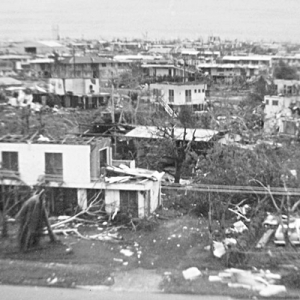
Such a storm is an example of what Ning Lin, a civil and environmental engineering professor at Princeton University in New Jersey, USA, calls a "black swan" cyclone. Something similar, she says, could hit the Persian Gulf, inundating unprepared cities like Dubai - which has never seen a cyclone - with similarly enormous storm surges.
"A black swan is a surprise with huge impact," she said yesterday at a meeting of the American Geophysical Union in San Francisco, California. "For this study, we defined [it] as an event which cannot reasonably be anticipated based on historical records alone."
Persian Gulf unprepared for storm risk
America's recent Superstorm Sandy, she added, was not a black swan, even though it produced the highest ever recorded water level at New York City's Battery Park. That's because a prior storm in the 19th century had produced a storm surge only 75 centimetres lower - and that storm came at low tide, while Sandy hit at high tide.
What's needed to figure out the magnitude of what could possibly happen, she said, is to run thousands of computer simulations of cyclones the adjacent seas might produce.
In the U.S., one area that popped up as highly vulnerable was Tampa, Florida - mostly because the coastal topography could magnify a storm surge into something truly dramatic. In the Persian Gulf, her simulations showed that even though it had never happened in recorded history, the shallow, hot waters could sustain tropical storms generating surges greater than five meters - a risk, she feared, that local planners have never prepared for.
Rising sea levels could magnify effects
Offshore from Darwin - the capital of Australia's Northern Territory - the waters are also shallow and hot. And, devastating as it was - Cyclone Tracy killed 65 people and destroyed 70% of the city's homes - Tracy was a "compact" storm that produced a storm surge of only 1.6 meters, a mere kitten compared to what her simulations show might happen every 20,000 or 30,000 years.
In any given year, she said, such events are unlikely. "The probability is low," she added, "but not zero".
Other scientists note that rising sea levels magnify storm effects. Speaking at the same meeting, Hilary Stockdon, an oceanographer at the U.S. Geological Survey's office in St. Petersburg, Florida, noted that the horrific photos of beach communities ravaged by Superstorm Sandy were a predictable effect of the combination of cyclones and rising sea levels.
"It may look shocking, but this is the natural response of barrier islands to storms," she said.
"Extremes of the extreme"
During normal storms, she said, beaches are eroded, but the sand is deposited in sand bars off shore, from which it gradually replenishes the beaches. But in large storms during times of rising seas, the storm surge over-washes the island, carrying sand from the seaward side to the landward side. In essence, the island migrates shoreward, toward shallower water. Houses, though, stay put, forcing governments to dredge sand from offshore to replenish the beaches and dunes that once protected them.
Dylan McNamara, an assistant professor of physics and physical oceanography at the University of North Carolina, Wilmington, said that eventually beachfront property values will collapse, comparing the result to the bursting of an economic bubble. His models, in fact, showed as much as a 40% decline.
Lin also sees possible bad news in the future. Although her studies focus primarily on events that could happen today, other studies, she said, have a dangerous mix in predictions. Specifically, she said that while these studies tend to show a reduced number of tropical cyclones hitting land - a seemingly good thing - they also show a rise in the intensity of those that do hit.
"When we talk about black swans, we're talking about the extremes of the extreme," she said. "So even though the total number might decrease, the extremes might increase."



Christ!Any Non-AGW Weather Articles?
They've all got to blame humans.... though weather and climate have been hugely variable - by their nature - whereever we've studied them on other planets and however far back we look at our own Earth's history.
Whatever. That horse done got beat to death, died, been cored and mutilated, and ain't even had no blood left in it for many a year.
R.C.